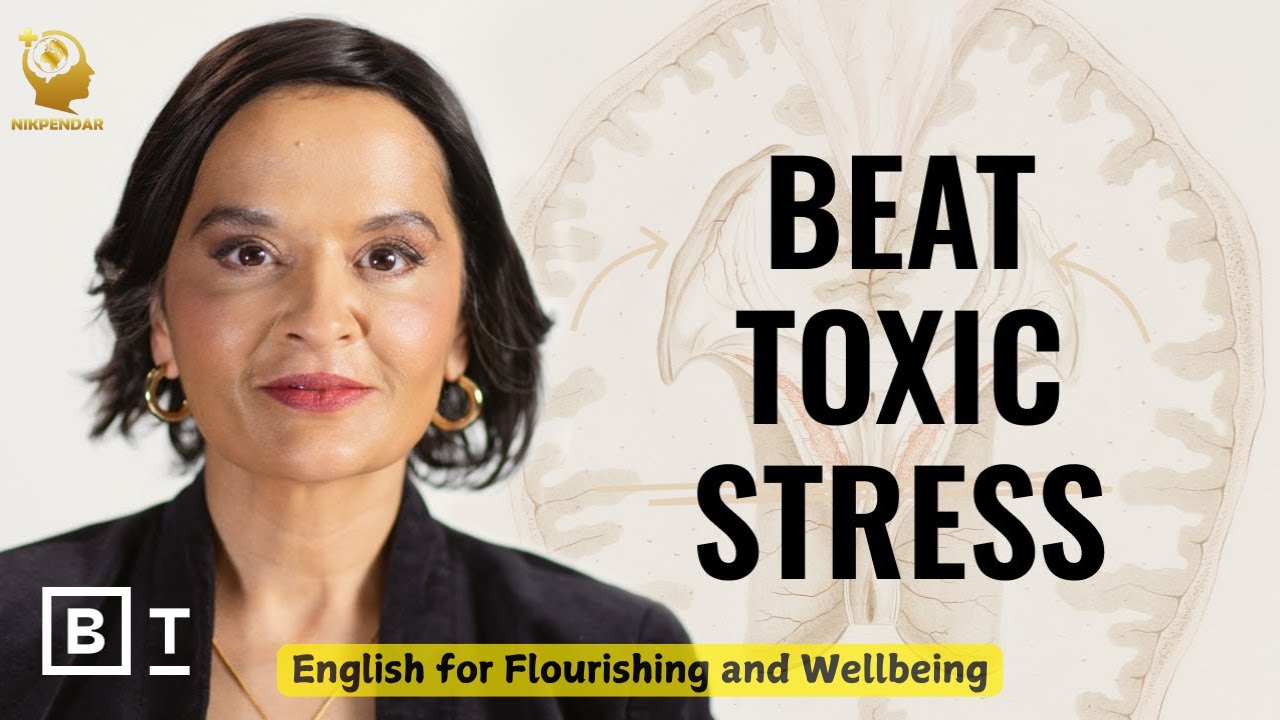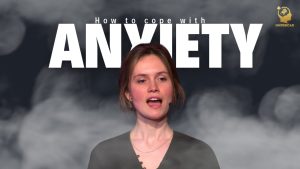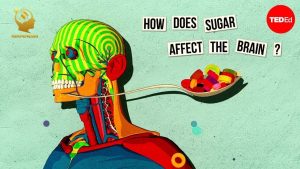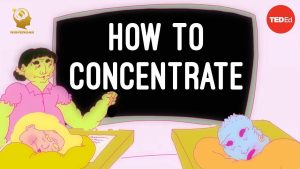
Beginner
Task 1: What is Stress?
Dr. Nerurkar says stress is a normal part of life. What does she say stress is like? Why is it impossible to live with “zero stress”?
- Prompt: Talk for 1-2 minutes.
- Keywords to use: stress, normal, impossible, life
Task 2: Feeling Stressed
Have you ever felt stressed? What did it feel like? What do you do when you feel stressed?
- Prompt: Talk for 1-2 minutes.
- Keywords to use: stressed, feel, do, relax
Intermediate
Task 1: The “Resilience Myth”
Dr. Nerurkar talks about the “resilience myth.” What is this myth, and why does she say it’s not true? How does she define “true resilience”? Give an example of how you can practice true resilience in your own life.
- Prompt: Talk for 2-3 minutes.
- Concepts to include: resilience myth, true resilience, boundaries, self-compassion, personal example.
Task 2: Healthy vs. Unhealthy Stress
Explain the difference between healthy (adaptive) stress and unhealthy (maladaptive) stress, as described in the transcript. Provide an example of each type of stress from your own experience or observations. What impact does each type of stress have on our brain, according to Dr. Nerurkar?
- Prompt: Talk for 2-3 minutes.
- Concepts to include: adaptive stress, maladaptive stress, examples, brain impact (prefrontal cortex, amygdala, fight or flight).
Advanced
Task 1: The Brain’s Response to Modern “Tigers”
Dr. Nerurkar compares modern-day stressors (like bills, relationships, parenting) to “tigers” that activate our brain’s stress response. Elaborate on this analogy. How does the brain’s response to these “metaphorical tigers” differ from how it responded to real tigers in ancient times? Discuss the long-term effects of this chronic stress response on the brain and inner critic.
- Prompt: Talk for 3-4 minutes.
- Key Concepts to address: metaphorical tigers, chronic stress, amygdala, prefrontal cortex, inner critic, neuroplasticity, long-term effects.
Task 2: Actionable Resets and Neuroplasticity
The speaker suggests two simple “resets” to manage stress: the “Stop, Breathe, Be” exercise and gratitude. Explain how each of these practices works scientifically, linking them to concepts like anxiety, cognitive reframing, and neuroplasticity. Discuss how understanding the brain’s ability to change (neuroplasticity) empowers individuals to manage stress and burnout, even after difficult past experiences.
- Prompt: Talk for 3-4 minutes.
- Key Concepts to address: Stop, Breathe, Be (anxiety, present moment), gratitude (cognitive reframing, what you focus on grows), neuroplasticity, rewiring the brain, managing stress as a skill.
Beginner
Task 1: True or False – Understanding Basic Ideas
Listen to the talk. Decide if the following sentences are True or False.
- Stress is a part of our lives and we can’t escape it. (True/False)
- The goal of life is to have no stress at all. (True/False)
- Dr. Aditi Nerurkar was a medical resident. (True/False)
- She learned that resilient people never feel stress. (True/False)
- There is only one kind of stress. (True/False)
- The “Stop, Breathe, Be” exercise takes a long time. (True/False)
- Gratitude means writing down five things you are happy about. (True/False)
Task 2: Find the Words
Listen and find these words in the talk. Draw a line to match the word to its meaning.
- Stress a. to feel very tired because you worked too much
- Burnout b. feeling worried or tense
- Resilience c. the ability to become strong again after problems
- Gratitude d. the feeling of being thankful
Intermediate
Task 1: Identifying Key Concepts and Examples
Listen to the talk and answer the following questions in your own words.
- According to Dr. Nerurkar, what is a common false belief or “myth” about resilient people?
- What are the two main kinds of stress mentioned, and how do they differ in their impact on the brain and body?
- Explain the difference between how the brain works under normal circumstances versus under stress, referencing the prefrontal cortex and the amygdala.
- What is the main challenge with “modern-day tigers” (metaphorical stressors) compared to a real tiger in the forest?
- Describe the “Stop, Breathe, Be” exercise in your own words. What is its main purpose?
Task 2: Understanding Personal Experience and Motivation
Listen to the part where Dr. Nerurkar talks about her own experience.
- Why did Dr. Nerurkar decide to become an expert on stress and burnout? What personal experience led her to this path?
- How did her doctor initially react to her symptoms, and what was her own “first reaction” to being told it was stress?
- What did she realize about “true resilience” after her “diamond cracked”?
- Based on her experience, what is one important message she wants people to understand if they are feeling stress and burnout?
Advanced
Task 1: Analyzing Conceptual Distinctions and Metaphors
Listen carefully and provide a detailed analysis of the following.
- Dr. Nerurkar uses the metaphor of “tigers” to explain modern-day stress. Elaborate on this metaphor, explaining how “modern-day tigers” differ from literal tigers and the implications of this difference for our stress response. How does this connect to the idea of the “inner critic”?
- Explain the concept of neuroplasticity as described in the talk. How does the understanding of neuroplasticity offer hope for individuals who have experienced difficult childhoods or trauma regarding their stress response?
- Discuss the speaker’s argument that “learning how to manage your stress is a skill just like riding a bike.” What does this imply about the nature of stress management and personal agency?
Task 2: Critical Reflection and Application
Listen to the entire talk and then answer the following questions, synthesizing information from different parts of the transcript.
- The speaker states, “The goal of life is not to live a life with zero stress; it’s to live a life with healthy, manageable stress.” Argue for or against this statement, drawing upon points made by Dr. Nerurkar regarding adaptive vs. maladaptive stress, and integrating your own perspective.
- Dr. Nerurkar presents “Stop, Breathe, Be” and “Gratitude” as two simple “resets.” Explain the scientific principles (e.g., physiological control of breath, cognitive reframing) that underpin the effectiveness of these two practices. How might these simple resets be particularly effective in an “over-scheduled and stressful life”?
- Reflect on the initial scenario Dr. Nerurkar describes: patients in a packed waiting room not speaking, but bursting into tears once the door closes. What does this reveal about societal perceptions and stigmas around stress and burnout? How does the overall message of her talk challenge or address these stigmas?
Beginner
Task 1: What is Stress?
Read the first few paragraphs where Dr. Nerurkar talks about stress.
- What does she say about stress? Is it good or bad to have some stress?
- What is the goal of life when it comes to stress?
- Write 2-3 sentences to answer these questions.
Task 2: “Stop, Breathe, Be”
Read the section where Dr. Nerurkar explains “Stop, Breathe, Be.”
- What are the three steps?
- Why does she say this exercise is good for stress?
- Write 2-3 sentences describing this exercise and its purpose.
Intermediate
Task 1: The Resilience Myth
Dr. Nerurkar talks about the “resilience myth.”
- What is the common idea of resilience that she says is a myth?
- What is “true resilience” according to her?
- How did her own experience as a medical resident connect to this myth?
- Write a paragraph (100-150 words) explaining the “resilience myth” and the speaker’s definition of true resilience.
Task 2: Adaptive vs. Maladaptive Stress
The speaker describes two kinds of stress: adaptive and maladaptive.
- Define both types of stress using examples from the transcript.
- How do they impact the brain differently (prefrontal cortex vs. amygdala)?
- How does this relate to “modern day tigers”?
- Write a paragraph (120-180 words) comparing and contrasting adaptive and maladaptive stress, and explain their impact on the brain in modern life.
Advanced
Task 1: Neuroplasticity and Managing Stress
The transcript discusses neuroplasticity and its implications for managing stress, especially for those with difficult childhood experiences.
- Explain what neuroplasticity is and how our understanding of the brain has changed.
- How does the concept of neuroplasticity offer hope for individuals who have experienced trauma or have a heightened stress response from early childhood?
- Analyze the speaker’s message about creating “new neural pathways” for stress management, connecting it to the idea that managing stress is a learned skill.
- Write an essay (200-250 words) exploring these points.
Task 2: Reframing Stress: From “Velcro to Teflon”
Dr. Nerurkar uses the metaphors of “Velcro” and “Teflon” to describe how our brains handle negative experiences, particularly under stress. She also mentions “cognitive reframing” and “scarcity mindset.”
- Explain the meaning of “Velcro” and “Teflon” in the context of stress and negative experiences.
- Discuss how practices like gratitude contribute to “cognitive reframing” and help move the brain from a “Velcro” to a “Teflon” state.
- Analyze the “scarcity mindset” mentioned in the transcript and how addressing it can lead to less stress.
- Write an essay (250-300 words) discussing these concepts and their role in managing stress effectively.
Beginner
Task 1: What is Stress?
Dr. Nerurkar says that stress is a part of our lives and we cannot avoid it. What is stress? Is all stress bad? What are two simple things you can do to feel less stressed, as mentioned in the video?
- Keywords to use: stress, bad, good, stop, breathe, grateful
Task 2: My “Tiger”
The speaker talks about “tigers” in modern life that cause stress, like bills or school. Think about something in your daily life that makes you feel a little stressed. What is your “tiger”? Write 3-4 sentences about what it is and how it makes you feel.
- Keywords to use: tiger, stress, feel, school/work/bills
Intermediate
Task 1: The Resilience Myth vs. True Resilience
Dr. Nerurkar discusses the “resilience myth” and contrasts it with “true resilience.” Explain the difference between these two concepts. What does true resilience involve, according to her? How can understanding this difference help someone deal with stress and burnout?
- Word Count: 100-150 words
- Concepts to include: resilience myth, true resilience, boundaries, self-compassion, burnout
Task 2: Adaptive vs. Maladaptive Stress
The speaker explains that not all stress is the same, distinguishing between adaptive (healthy) and maladaptive (unhealthy) stress. Describe these two types of stress and provide an example of each. How do they affect the brain differently, especially regarding the prefrontal cortex and amygdala?
- Word Count: 120-180 words
- Concepts to include: adaptive stress, maladaptive stress, prefrontal cortex, amygdala, fight or flight, examples
Advanced
Task 1: Neuroplasticity and Rewiring the Brain
Dr. Nerurkar emphasizes the concept of neuroplasticity, stating that the brain can change and adapt. Explain what neuroplasticity means in the context of managing stress and burnout, especially for those with difficult early childhood experiences or trauma. How does this scientific understanding offer hope and practical solutions for individuals struggling with chronic stress?
- Word Count: 200-250 words
- Key Concepts to address: neuroplasticity, brain change, stress response, trauma, new neural pathways, hope, practical solutions.
Task 2: Resolving Stress in a “Messy, Over-scheduled Life”
The speaker addresses the challenge of resetting stress without completely revamping one’s life. Discuss the two “resets” (Stop, Breathe, Be, and Gratitude) she proposes. Explain why each of these practices is effective from a scientific standpoint (e.g., voluntary/involuntary control of breath, cognitive reframing for gratitude). Evaluate how these simple, accessible practices can be integrated into a busy life to foster resilience and well-being.
- Word Count: 250-300 words
- Key Concepts to address: messy life, Stop, Breathe, Be, Gratitude, physiological control, anxiety, future-focused emotion, cognitive reframing, consistency, resilience, well-being.





